This travel wiki page of Tanzania will help guide travelers with quick and relevant information to consider when planning and visiting the country. It is difficult to find all the relevant information on Tanzania’s culture, safety, travel restrictions, and things to do, so we summarize it all here. If anything is stale or outdated, please let us know! Let’s dive in and explore more high-level information as a Tanzania trip planner.
Last updated April 25th of 2023.
Table of contents
National Information & Culture
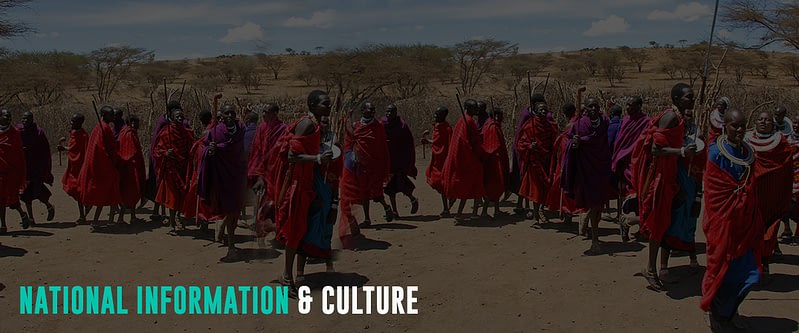
Tanzania, officially the United Republic of Tanzania, is a country in East Africa. Tanzania shares land borders with Uganda, Kenya, Mozambique, Malawi, Zambia, Rwanda, Burundi, and the Democratic Republic of the Congo. Although Dodoma is the official capital, Dar-es-Salaam is the largest city, administrative capital, and commercial center. Tanzania’s official currency is the Tanzanian Shilling (TZS).
Tanzania is known for its diverse topography, which includes the highest peak in Africa, Mount Kilimanjaro, and the largest lake in Africa, Lake Victoria. Tanzania and the rift valley region of East Africa are believed to be the origin of modern humans. Archaeologists have uncovered Africa’s oldest human settlement in Tanzania, including fossilized hominid remains and tools dating from one to two million years ago.
The country has over 120 ethnic groups and over a hundred languages. There is a high proportion of the Muslim population in Tanzania, especially in Zanzibar and Pemba. Hence, respect traditions and local customs at all times. Dress modestly by not wearing sleeveless tops and shorts away from tourist resorts.
Tanzania has a conservative society where homosexuality is illegal, and public displays of affection must be avoided.
Visit Tanzania’s Official Tourism Website for more information and tips when planning your trip.
Special Travel Considerations
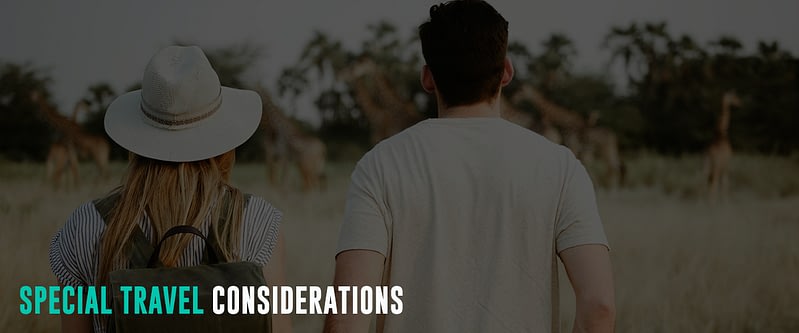
Each country and destination has rules and regulations that every traveler must consider. Hence, check the following considerations for hassle-free travel to Tanzania.
Covid-19 Protocol
As of January 12, 2023, all travelers entering mainland Tanzania and Zanzibar are not required to present Covid-19 test results but are advised to be fully vaccinated. However, port officials may conduct random testing on selected individuals at various ports of entry for surveillance purposes. Participants are randomly selected from the arriving passengers for free. Check the official travel advisory from this link.
The Covid-19 protocol of Tanzania may vary over time with the evolution of the pandemic. Therefore, check the latest Covid-19 entry requirements when planning your trip.
Travel Insurance
Travel and health insurance are not mandatory for visitors to enter Tanzania. However, it is advisable to have one that covers emergency medical treatment, including Covid-19, repatriation, and evacuation. Travel insurance can protect you against the inconvenience of injury, medical emergencies, theft, and flight cancellations. In addition, it is a comprehensive protection in case anything goes wrong with your trip.
Visa Information
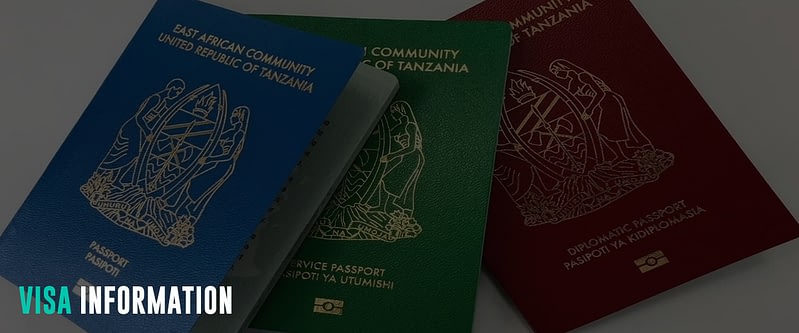
Nationals of 69 visa-exempt countries can enter Tanzania for up to 3 months, while citizens of 28 countries must secure a referral visa. On the other hand, other passport holders can obtain a visa on arrival or apply for an electronic visa, both subject to applicable visa fees. Processing of the electronic visa takes ten business days and applies to guests arriving in the below specific ports of entry:
- Dar es Salaam Julius Nyerere International Airport (DAR)
- Kilimanjaro International Airport (JRO)
- Zanzibar Abeid Amani Karume International Airport (ZNZ)
- Mwanza International Airport (MWZ)
- Namanga border with Kenya
- Tunduma border with Malawi
Aside from a visa, all visitors to Tanzania must have at least six months of a valid passport, return or onward ticket, and sufficient funds.
Visitors must also have a yellow fever certificate if they pass through countries with a risk of yellow fever.
Popular Attractions
Tanzania is home to some of Africa’s most awe-inspiring and diverse natural landscapes. Its top tourist attractions reflect this diversity, from the continent’s iconic highest peak of Mount Kilimanjaro, diverse wildlife, abundant marine life and beautiful beaches, and exciting archaeological findings. Tanzania’s unique natural beauty, wildlife, and culture make it a top destination for adventure seekers and safari enthusiasts.
Serengeti National Park
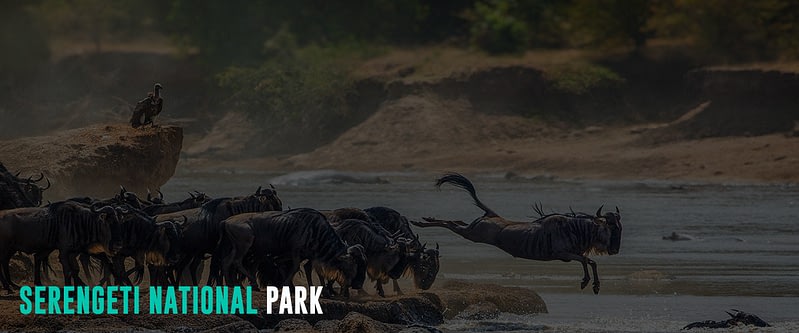
The Serengeti National Park in northern Tanzania has over 1,500,000 hectares of virgin savanna. The park is home to the largest lion population in Africa and is famous for the world’s largest annual animal migration, including over 1.5 million blue wildebeest and 250,000 zebras. The park also hosts herds of Thomson’s gazelle and eland. Despite being threatened by deforestation, population growth, and ranching, it remains a UNESCO World Heritage Site. It has over 2 million ungulates, 4000 lions, 1000 leopards, 550 cheetahs, and 500 bird species.
Visitors can witness the Great Migration, spot majestic lions, or search for an elusive leopard in a riverine forest. Aside from the usual wild safari experience, the park offers hot air balloon safaris for a unique perspective. Also, accommodation options are available in every price range.
The best time to visit is between June and September and during the annual migration in May or early June.
Ngorongoro Crater
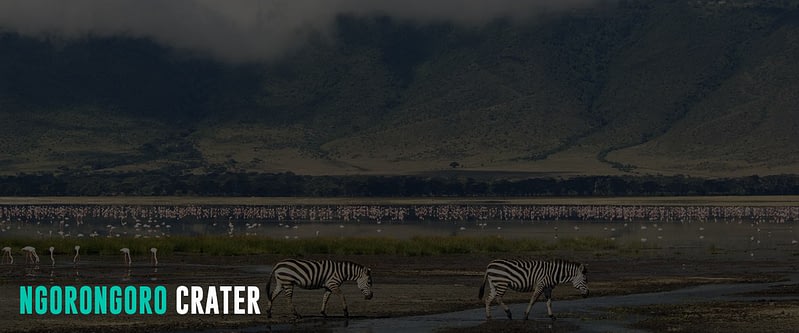
The Ngorongoro Crater in Tanzania is the world’s largest intact caldera. It was formed from a massive volcano that was believed to be higher than Mount Kilimanjaro before it erupted and collapsed. The crater is almost three million years old and is estimated to be one of the lushest wildlife habitats on Earth. The crater floor features grasslands, swamps, and forests and is home to Lake Migadi, which attracts flamingos and hippos. In addition, its steep sides have become a natural enclosure for wild animals, including the endangered black rhino.
A UNESCO World Heritage Site, the crater is part of the Ngorongoro Conservation Area (NCA), a mixed-use area for wildlife and Maasai pastoralists. It includes the Ngorongoro Crater and spans vast highland plains, savanna, woodlands, and forests. It has global importance for biodiversity conservation, archaeological research, and human-environment dynamics.
Due to the permanent water supply, the area attracts thousands of animals who stay year-round. Hence, making it one of Tanzania’s most popular wildlife viewing areas. Visitors come to view large animals and birds, including lions, elephants, rhinos, gazelles, buffaloes, wildebeests, and zebras.
Another exciting part of the NCA is the Olduvai Gorge, an archaeological site that revealed ancient skulls and bone fragments. Archaeologists also found tools and hunting weapons from 1 to 1.5 million years ago. There is also a discovery of the renowned footprints of a man, woman, and child in Laetoli near Olduvai. These, among others, add to the findings that at least three hominid species lived in this area over two million years ago.
Mount Kilimanjaro
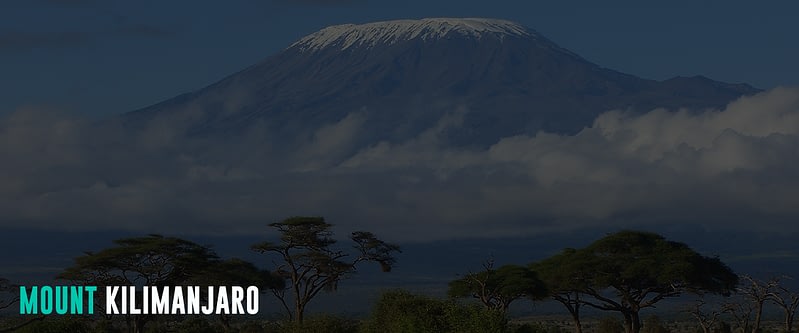
Mount Kilimanjaro is Africa’s highest peak and Tanzania’s most iconic mountain at about 5,895 meters. It is a stratovolcano comprising three cones: Kibo, Mawenzi, and Shira. Kilimanjaro National Park surrounds the mountain and its six surrounding forest corridors. In 1973 the park was named a UNESCO World Heritage Site to protect its unique environment.
The climb to the snow-capped peak is famous, and tens of thousands of climbers ascend yearly. Kilimanjaro National Park is home to numerous mammals and many endangered species. The best time to visit is from late June to October during the dry season.
Zanzibar
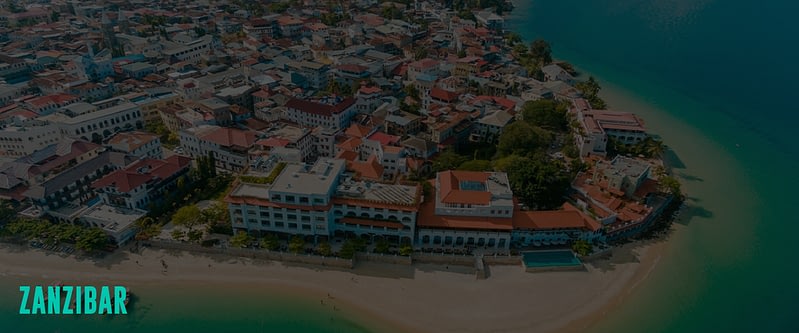
Zanzibar is an archipelago in the Indian Ocean and consists of two large islands, Unguja or Zanzibar Island and Pemba Island. Zanzibar Island, a popular holiday destination in Tanzania, attracts visitors to its beautiful beaches, including Kizimkazi, Nungwi, and Kendwa Beach. Moreover, the island has an intriguing mix of history, culture, and stunning geography with coconut palms and white-sand beaches.
The island’s historic center, Stone Town, is a UNESCO World Heritage Site and is part of Zanzibar City. It has an old trade center, winding lanes, and historical sites such as the 1883 House of Wonders and the Old Fort. Mnemba is an exclusive satellite island, while the main island has many accommodation options. Visitors will find traditional boats lining the shores and clear shallow waters perfect for water activities.
Lake Manyara National Park
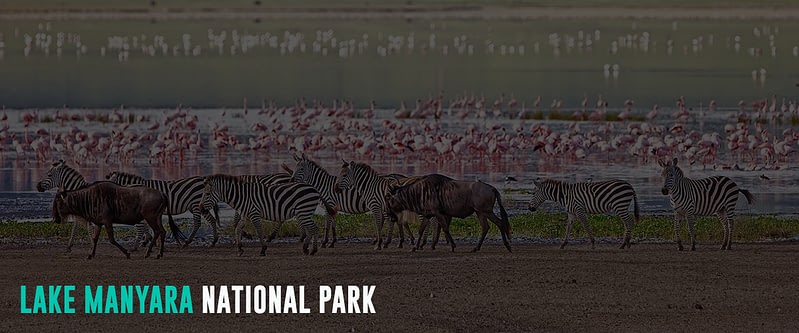
Lake Manyara National Park is a small park in Tanzania between Lake Manyara and the Great Rift Valley. The park is famous for its tree-climbing lions, forests, and hot water springs. In addition, it is home to diverse wildlife, including large herds of elephants, wildebeests, waterbucks, impalas, warthogs, zebras, over 400 species of birds, and over two million flamingoes. Hence, the park is a paradise for birdwatchers. Other popular activities in the park include wildlife drives, mountain biking, and canoeing.
Visitors can also interact with the local Maasai people, participate in traditional activities, and observe their way of life. In addition, they offer cultural experiences, including joining a Maasai warrior for a run, sharing a traditional meal, and watching a leaping dance.
The park is considered an all-year-round game park, with the dry season from July to November being the best time for game viewing. Additionally, the park is part of the Lake Manyara Biosphere Reserve, established by UNESCO in 1981.
Mafia Island Marine Park
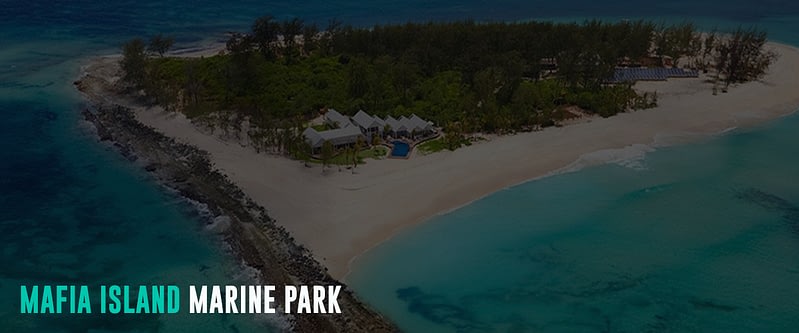
Mafia Island Marine Park is a protected marine nature reserve that extends over 822 sq km, located southeast of Zanzibar Island in Tanzania. The area hosts marine habitats such as coral reefs, seagrass beds, mangroves, and inter-tidal flats. It is home to over 380 fish species, including whale sharks, which attract many tourists. The park also highlights the presence of dugongs, dolphins, sea turtles, and migratory species, such as humpback and sperm whales, which can be seen from August to November. In addition, the park supports Tanzania’s largest green turtle rookery and is a traditional breeding site for critically endangered hawksbill turtles.
Aside from the rich marine life, the park also boasts pristine beaches, an abundant variety of fish, and a relaxed diving atmosphere, making it a popular destination for divers and snorkelers. Deep-sea fishing is also a popular activity on Mafia Island. Moreover, travelers will find historic ruins dating back to the 13th century.
Tarangire National Park
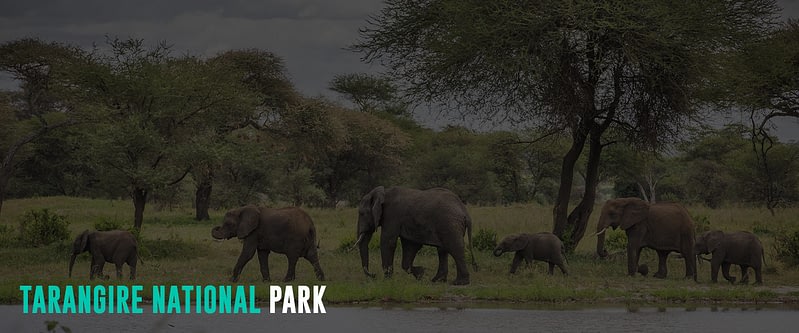
Tarangire National Park is a wildlife-rich national park in Tanzania’s Manyara Region. It is named after the Tarangire River, the primary source of fresh water for wild animals during the annual dry season. As a result, thousands of animals, including wildebeest, zebras, buffalo, impala, gazelle, hartebeest, and eland, concentrate in the park during the dry season. The park covers an area of approximately 2,850 square kilometers and comprises granitic ridges, river valleys, swamps, Acacia woodland, Combretum woodland, seasonally flooded grassland, and baobab trees.
The park has a high concentration of African elephants. It is also home to endangered species such as ebony trees, pythons, cheetahs, African wild dogs, lesser and greater Kudu, and Beisa Oryx. With more than 550 bird species recorded, Tarangire is an excellent location for birdwatching. Some bird species include buzzards, vultures, herons, storks, kites, falcons, and eagles. Visitors can also witness the magnificent landscapes and wildlife on a walking safari or a luxurious safari retreat within the park.
Ruaha National Park
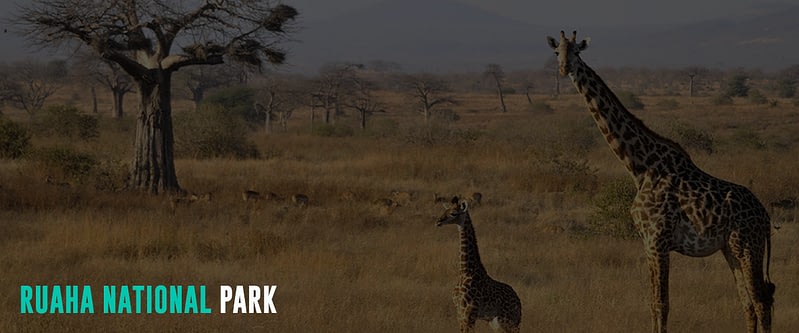
Ruaha National Park is one of Tanzania’s largest parks, located west of Iringa, and is part of the Rungwa-Kizigo-Muhesi ecosystem. The park is named after the Great Ruaha River, which flows along its southeastern margin. The park can be accessed by a dirt road from Iringa or by two airstrips.
Ruaha National Park has a convergence of vegetation zones, resulting in a unique combination of animals, such as the Greater and Lesser Kudu, sable and roan antelopes, not found in other national parks. Essential animals in the park include elephants, zebras, lions, giraffes, hunting dogs, ostriches, gazelles, hyenas, crocodiles, and hippos, mainly found in the Great Ruaha River. Over 540 species of birds are also found in the park. Ruaha National Park is relatively untouched, making it ideal for photographers and birdwatchers. The park is famous for hosting 10% of the world’s lion population and the largest population of elephants in East Africa.
Ruaha National Park also offers cultural tours that allow visitors to experience local culture, traditions, and history with the Hehe people. In addition, visitors can watch their craft items and farm the land for resources.
Pemba Island
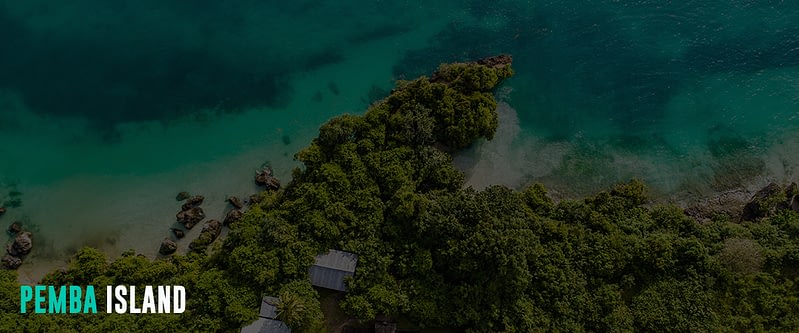
Pemba Island, also known as the “Green Island,” is the northernmost island in the Zanzibar archipelago. The island is a dominant producer of cloves, accounting for over 70% of the world’s clove production. It is also famous for its traditional medicine and magic practices. But that’s not all that Pemba Island has to offer.
Pemba Island boasts some of the best scuba diving in the Indian Ocean, with unparalleled visibility, coral gardens, colorful sponges, and sea fans. The waters around Pemba are home to abundant marine life, including clownfish, sea anemones, barracuda, marlins, sharks, whales, and dolphins, making it an ideal spot for diving and swimming. In addition, the city of Chake Chake, the main population center of Pemba, is a popular base for scuba divers.
Its coast is lined with mangroves, lagoons, and idyllic beaches and islets. Misali Island Beach is a must-visit spot, with an incredible white-sand beach on an uninhabited tropical island. However, away from the beach and water, another popular tourist activity on the island is cycling the hilly and lushly vegetated surroundings.
Aside from its beautiful waters and enticing beaches, Pemba Island’s history and archaeological significance add another layer of intrigue to this fascinating destination. Archaeological excavations have revealed the centrality of the island within the Swahili coastal trading system from the 7th century AD, with urban settlements developed on the northern coast from the 11th to the 16th centuries. The Mkama Ndume ruins date to the 15th century and appear to be the only known early fortification on the Swahili Coast.
With its stunning beaches, pristine natural beauty, a wealth of activities, and historical importance, Pemba Island is a destination that should not be missed.
Nyerere National Park (Selous Game Reserve)
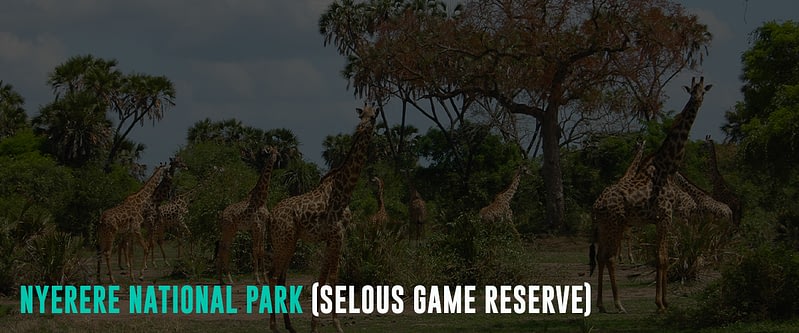
A UNESCO World Heritage Site, Nyerere National Park is Tanzania’s newest and largest national park, formerly known as Selous Game Reserve. It covers 30,893 sq. km. and is more extensive than 70 countries worldwide. The park is located in four regions, mainly in a wild state. It is home to Tanzania’s largest river, Rufiji, with crocodiles and hippos, and the world’s largest mangrove forest at its delta. The park boasts one of the largest concentrations and diverse wildlife species, including lions, cheetahs, rhinos, elephants, wildebeests, elands, and over 350 recorded species of birds.
Visitors can take their pick of boat, game, hot air balloon, and walking safaris. The southern area of the Selous Game Reserve is a forbidden zone, while the northern area offers extensive open grasslands, woodlands, rivers, hills, and plains. The best time to visit is from July to October. Despite poaching and hydro-development challenges, Nyerere National Park remains a popular tourist attraction, with around 16,000 elephants and a thriving population of wild dogs.
Primary Spoken Language(s)
Tanzania is a linguistically diverse country with a presence of over 100 languages but does not have an official language. Kiswahili is used in the government and the medium of instruction in primary school. In contrast, English is used in foreign trade, diplomacy, a higher court, and the medium of instruction in secondary and higher education.
Safety Concerns
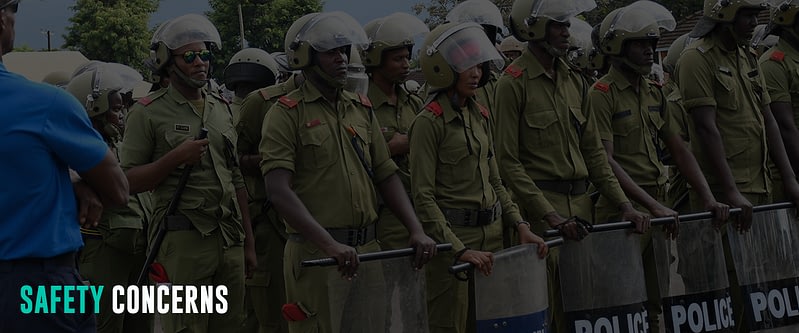
Tanzania ranks 86th out of 163 countries on the 2022 Global Peace Index. Also, Tanzania has a Level 2 Travel Advisory from the US Department of State. Hence, travelers in Tanzania are advised to take caution when exploring the country.
Petty crimes like pickpockets, bag snatching, and robbery are an everyday occurrence in Tanzania. Therefore, travelers must avoid carrying jewelry and lots of money, keep their valuables secure, and never dress flashy. Have their belongings at hand at all times. Be careful of children running around as sometimes they are forced to commit crimes and steal from tourists. Also, be cautious in crowded areas such as markets and bus or train stations, as this is where scams and violent crimes happen. Visitors must also watch out for unregistered taxis and avoid traveling alone at night, even within the city limits. Due to the threat of terrorism, reconsider travel to the Mtwara Region in southern Tanzania.
Health
Malaria (including chloroquine-resistant strains) is a year-round occurrence in Tanzania, except in areas with high altitudes (1800 m asl). Also, yellow fever and other insect-borne diseases such as Zika virus, dengue, filariasis, and East African trypanosomiasis (sleeping sickness) can happen. In addition, Tsetse flies carrying sleeping sickness are common in Tanzania’s northern safari area. Hence, travelers should consider taking anti-malarial medication and consult a health professional for proper vaccinations.
Like in other African countries, HIV/AIDS is widespread in Tanzania. Therefore, travelers taking part in high-risk activities must take precautions.
Last March 2023, Tanzania has an outbreak of the Marburg virus in the Bukoba District in the Kagera Region. Marburg virus is spread through contact with infected bodily fluids from people and animals.
Natural Disaster
Tanzania lies on a fault line, and earthquakes can happen anytime. Hence, it is best if every traveler knows the basic earthquake safety measures. Get updates from the news, and follow the authorities.
Local Laws
Tanzania has a conservative society as there is a high proportion of the Muslim population. Therefore, travelers must respect local traditions, customs, and religions to avoid offending. Dress modestly; women should avoid shorts and sleeveless tops away from tourist resorts. Zanzibar authorities penalize tourists, guides, and tour operators for inappropriate clothing in public.
In addition, homosexuality is illegal in Tanzania. It is unacceptable to show public affection, including holding hands and kissing. Doing such things can lead to arrest, harassment, intimidation, and jail. Members of the LGBT community under suspicion of same-sex sexual conduct might be subject to an invasive examination by authorities.
Lastly, plastic bags are prohibited for environmental reasons, and airline passengers will be asked to surrender plastic bags on arrival.
Budget Considerations
Your money can go a long way regarding food, transportation, and accommodation in Tanzania. However, the cost of attractions and safari activities will get a big part of every traveler’s budget in Tanzania.
Accommodation
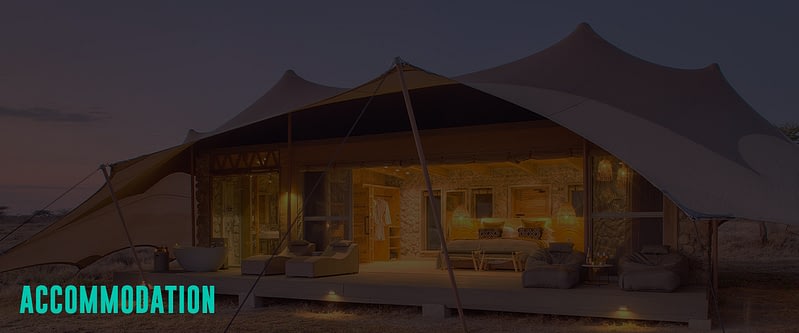
Like every tourist destination, the accommodation cost in Tanzania varies according to location and travel season. In particular, hotel and lodging costs are highest during the peak season from June to October. Hence, visiting Tanzania during the shoulder season from November to March is best.
Travelers can get a bed in a hostel dorm in Tanzania for $10 per night and a private room for $15, with complimentary breakfast and standard wifi. Airbnb is also widely available for as low as $28 for a private room and about $45 for an entire apartment. Moreover, mid-range travelers can stay in three-star hotels for $50, while luxury tourists can get a four or five-star hotel for $220.
For campers with tents, campsites inside national parks and reserves cost between $35 and $60 per person per night.
Food
Foods, especially fresh fruits and local cuisine in Tanzania, are very affordable. For example, travelers can get an avocado or a juicy mango at around $0.15. Expect to pay $1 – $3 per meal at local restaurants serving Tanzanian cuisines such as ugali (cornmeal paste), mshikaki (marinated beef), chips mayai (egg mixed with fries), nyama choma (grilled meat), pilau (rice mixed with spices) or rice and beans. Travelers can also get a combo meal on famous fast food chains for around $6.40. For a three-course dinner in mid-range restaurants or hotels, travelers can spend at least $15 per person.
Because accommodations in Tanzania have complimentary breakfasts and meals in local restaurants are cheap, travelers do not need to shop for groceries except for fresh fruits.
Attractions and Transportation
Tanzania has diverse attractions and landscapes, from the beautiful islands in the Zanzibar archipelago to rich wildlife from its national parks and reserves, including the volcanic massif of Mount Kilimanjaro.
Conservation fees for Tanzania’s national parks vary during the low and peak seasons. For example, foreign adult admission to Serengeti and Nyerere National Parks during the low season is $60 and increases to $70 during peaks. When planning your trip, consider checking the complete list of Tanzania’s National Park Tariffs applicable until June 2023. Meanwhile, expect to pay a hefty amount for travelers who want to join mobile and camping safaris.
Contrary to the cost of attractions and activities, transportation around Tanzania is quite affordable. A single bus ticket within the city only costs $0.10, while trains are around $0.20. Travelers who want flexibility in their schedules and activities can hire a 4WD vehicle for at least $60 for a multi-day rental. Consider adding $30 to $50 daily for a driver who will also serve as a guide. Moreover, luxury travelers can also avail of small charter flights between parks or remote areas or hire a boat or yacht in Zanzibar.
Average Two Week Cost
Budget travelers in Tanzania can explore the country with an $80 daily budget or $1120 for two weeks. The budget covers staying in hostel dorms with complimentary breakfast, eating local Tanzanian meals, taking buses and trains for transport, visiting a few national parks, and other cheap activities.
On the other hand, mid-range travelers spend at least $150 daily or $2100 for two weeks. It includes staying in a three-star hotel and taking occasional taxis. They can also occasionally dine in Western restaurants, join some mobile safaris, and enjoy the beaches of Zanzibar.
Lastly, travelers can enjoy luxury and privacy in Tanzania for $400 daily or $5600 for two weeks. It includes staying in four or five-star hotels or safari lodges, splashing out on meals, taking domestic or charter flights, renting a private car, and availing of all the paid tours and safaris they want. They can also rent a yacht and enjoy the islands and waters of Zanzibar. So for them, the sky is the limit for travel.
Customs And Import Restrictions

All arriving travelers to Tanzania must know the country’s customs and import policies for hassle-free entry. Below are the lists of goods and duty-free allowances that a traveler age 19 years and older can bring to Tanzania:
- personal goods;
- 250 grams of tobacco or 200 cigarettes or 50 cigars;
- One bottle of alcoholic beverages; and
- 580 milliliters of perfume;
Restrictions are imposed on certain goods and require a permit or license from the relevant authorities. These include:
- arms and ammunition;
- plants, animals, and their by-products;
Also, note that only residents of Tanzania, Kenya, or Uganda may import the local currency, Tanzanian Shilling, up to the amount exported. Non-residents cannot import local currency but bring in foreign currencies without restrictions.
When planning your trip, visit the Tanzania Revenue Authority website and Dar es Salaam airport portal for the complete rules and customs formalities list.
Climate Considerations
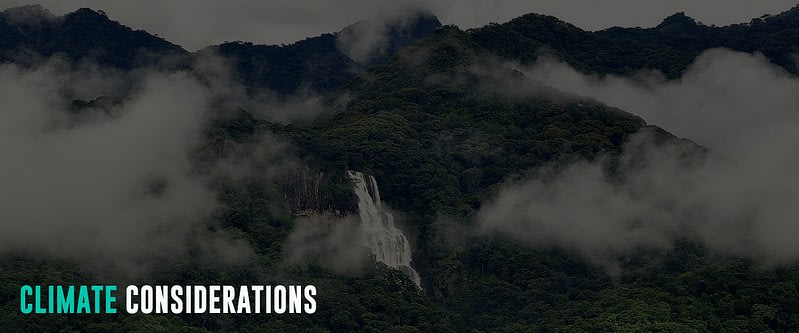
Generally, Tanzania has a tropical climate but has regional variations because of topography. For example, along the coast, the temperature is always hot from 25 °C to 31 °C while highland temperatures average 20 °C during the hot season but can drop to 10 °C during the cold season. Meanwhile, the rest of the country has a mild temperature between 22 °C and 27 °C.
The hottest season extends from October to March, while the cool season occurs between June to September. Also, note that Tanzania has seasonal rainfall. Tanzania’s northern and eastern parts have long rains from late March until May and short rains from October to December. Meanwhile, the south, west, and central parts experience wet seasons from October until May.
Primary Transportation Options
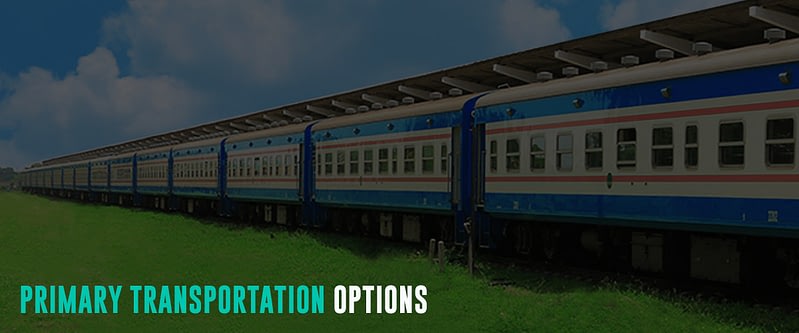
Getting around Tanzania and exploring all its attractions and destinations entails thorough planning. Nonetheless, depending on time and resources, visitors can get around Tanzania by air, boat, and land transport.
Air
Flying is the fastest way to get around Tanzania and visit its awe-inspiring destinations. Hence, flying is ideal for travelers with a limited time and a higher budget.
Tanzania has plenty of domestic and three international airports strategically located nationwide and is served by various airlines. The main entry point for international travelers is the Julius Nyerere International Airport in Dar es Salaam, Tanzania’s most significant and busiest airport. The Kilimanjaro International Airport, the “Gateway to Africa’s Wildlife Heritage,” follows and serves travelers visiting Tanzania’s northern safaris. It also caters to charter flights to and from north Tanzania’s national parks. On the other hand, travelers visiting Tanzania’s famous beach destinations can fly through Abeid Amani Karume International Airport in Unguja Island on the Zanzibar Archipelago.
Air Tanzania is the country’s flag carrier, carrying the national treasure and pride of Mt Kilimanjaro as its slogan – ‘The Wings of Kilimanjaro.’ Air Tanzania and Coastal Aviation operate daily flights from major cities to popular tourist destinations such as Arusha, Zanzibar, Mafia Island, Mwanza, Pemba Island, and Iringa. Other airlines providing domestic flights in Tanzania are Fastjet, Auric Air, As Salaam Air, Regional Air, Precision Air, Safari Airlink, and ZanAir. Other smaller towns and islands receive less frequent scheduled flights using small aircraft with lesser baggage allowances.
Boat
Ferries and water taxis transport travelers from the mainland to Unguja (Zanzibar) and Pemba islands and between the numerous Zanzibar archipelago islands. Azam Marine, one company that transports travelers from Dar es Salaam to Zanzibar, operates four scheduled trips daily. Travel time takes an hour and forty minutes for a one-way ticket of $35. They also have three to four trips from Zanzibar to Pemba and once a week from Pemba to Tanga. Moreover, Azam Marine provides boat rental and yacht charter. Several other ferry and boat services have irregular schedules that connect towns along Lake Victoria and Lake Tanganyika.
Remember to look out for dolphins swimming and jumping along with the boat in the Zanzibar archipelago. Also, a gentle reminder to stick to daylight travel and avoid traveling in severe weather.
Rail
Traveling by train is another inexpensive alternative to get around in Tanzania. However, services can be unpredictable. The Tanzania Railways Corporation (TRC) operates a luxurious passenger service from Dar es Salaam to Kigoma on Lake Tanganyika in Western Tanzania. They also have commuter train services in Dar es Salaam City to Ubungo and Pugu. The schedule is daily, except Sunday and public holidays, for a ticket price of $0.20 to Ubungo and $0.25 to Pugu. Furthermore, TRC also operates a few passenger long-distance routes weekly from Dar es Salaam to Kigoma, Arusha through Moshi, Mwanza via Tabora, and Mpanda via Tabora. Make sure to check the schedules on the TRC website.
Travelers coming from or going to Zambia can take the fast and regular passenger services by Tanzania-Zambia Railway Authority (TAZARA). They have boat schedules from Dar es Salaam to Zambia’s New Kapiri Mposhi via Mbeya and Tunduma.
For comfort, it is best to take the first or second-class train service for a higher fee than squeezing into the crowded third-class carriage. Reserve seats in higher classes at least a day or two ahead of time to avoid an unpleasant journey.
Bus
Buses are the cheapest way to explore the country’s diverse landscapes and attractions, where a single bus ticket within the city only costs $0.10. Tanzania has an extensive bus network that connects practically every location accessible by road. Around 3000 buses travel through the John Magufuli Bus Terminal in Dar es Salaam to various parts of the nation daily. In addition, several bus companies provide services from Dar es Salaam to the coast and towns around Tanzania. There are also international bus routes to Kenya, Rwanda, and Uganda. Buses range from rattletraps to luxury buses with air conditioning and restrooms, and they all make many stops for food and bathroom breaks.
Car Rental
Going on a road trip and visiting various destinations with a private car is always pleasurable, especially if the road conditions are good. But in Tanzania, where only 15% of the highways are paved, hiring a 4WD vehicle with a driver and guide familiar with the place and road conditions is an excellent choice. Car rental companies in large towns and cities charge at least $60 daily for the multi-day rental of a 4WD vehicle. Add around $30 to $50 daily for a driver who will also be a guide.
Remember not to leave valuables inside the car during parking, and keep the doors locked. Also, note that Tanzania drives on the left side of the road.
Taxi
Tanzania has no metered taxis, and travelers must negotiate the price before getting in. Lastly, remember to take note of the fares tariff posted by taxi associations in Dar es Salaam and Zanzibar airports. It can serve as your guide for fares in the city.
Nonetheless, Tanzanian taxis are relatively easy to spot in white color or have white license plates. Anyone can hail them from the roadside. However, asking the restaurants and accommodations concierge to organize it for you will be safe.
Alternatively, travelers can also avail of rideshare and Uber in Tanzania. In addition, many hotels and lodges have shuttles that ferry travelers from or to the airport and other transport hubs.
Boda Bodas (Motorcycle Tax)
Boda bodas, the local name for motorcycle taxis, is a fast, cheap, and thrilling way to get around Tanzania. However, like taxi cabs, travelers must negotiate the price before getting in. Also, make sure to only ride Boda Bodas with an available second helmet for the passenger.
Dala Dala (Minibuses)
Dala dalas, the local name for minibusses, are everywhere in Tanzania. It can fit 8 to 16 people squeezed inside the minibus. Fare is only $0.25 for a one-way journey within the city, and dala dalas come and go frequently.
Start Trip Planning
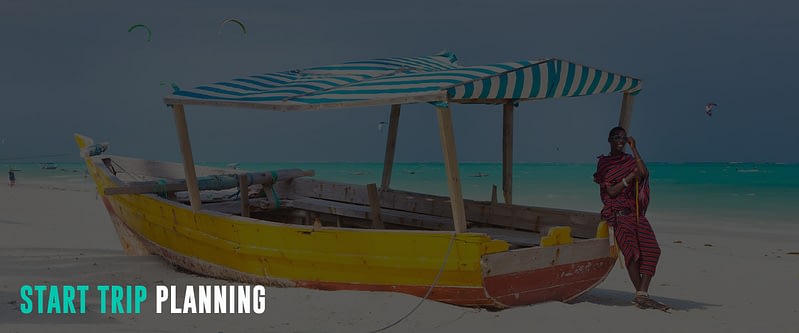
Travel-Wise is made from the ground up to help people travel more, break down the barriers that make it tough to get going, and start your journey as painlessly as possible. Bookmark our other Country Guides to help kick-start your research for future travels. We also offer templated itineraries from our staff and community that help serve as a building block for your trip plans. Alternatively, we also utilize AI to offer a way to generate itinerary ideas. This saves much time just getting you up and running with a template. From there, you can use the trip planner to create your customized itinerary, invite friends and family for collaboration, find others from Travel-Wise to join the trip, book and track important information, journal, and share your experiences at the end or along the way!

